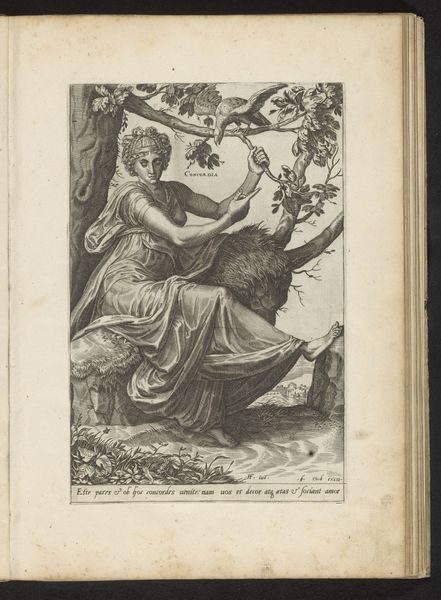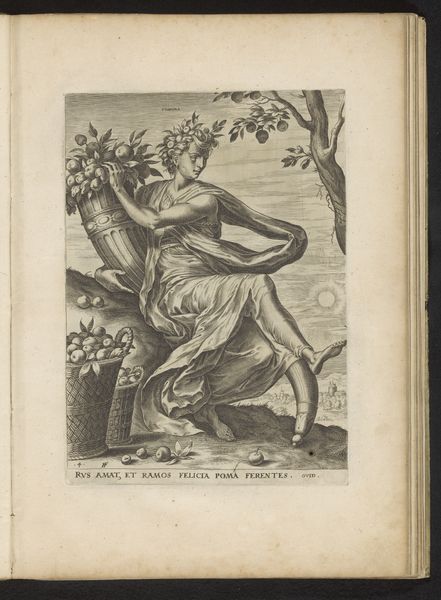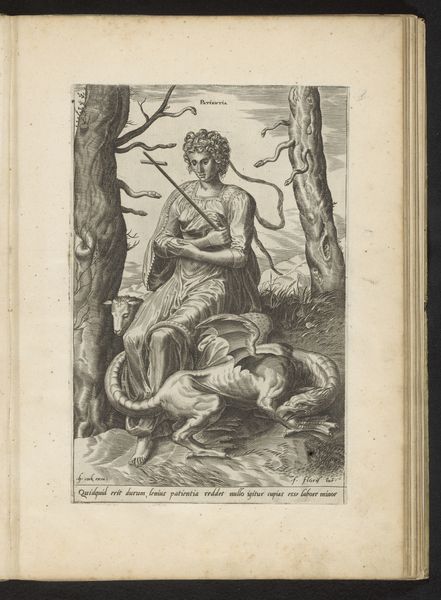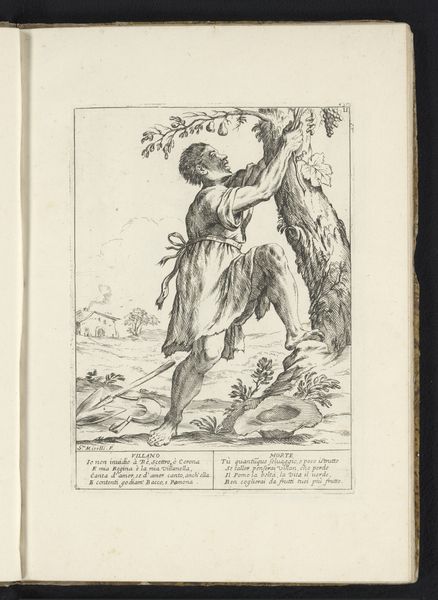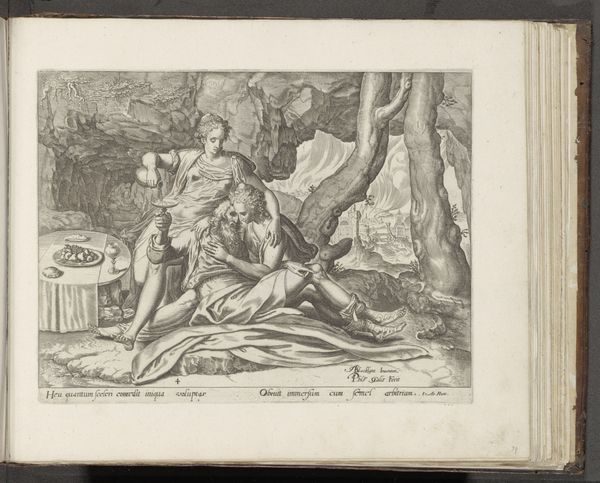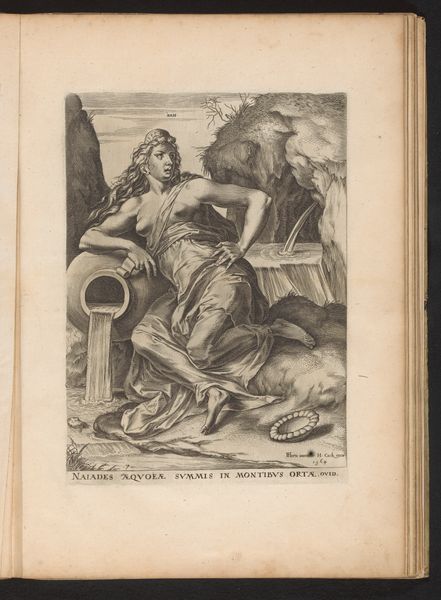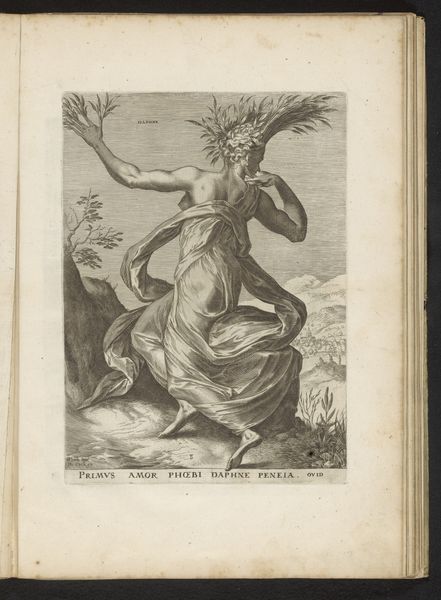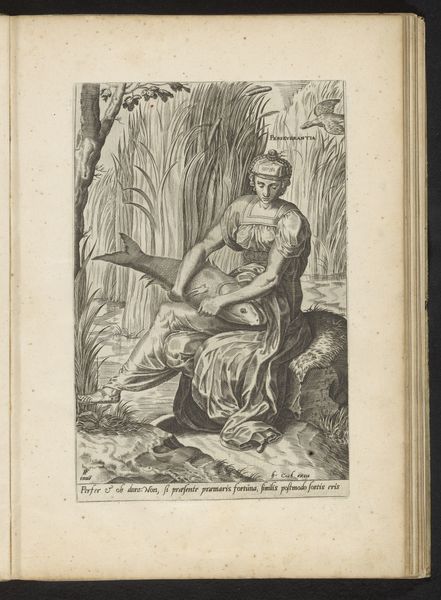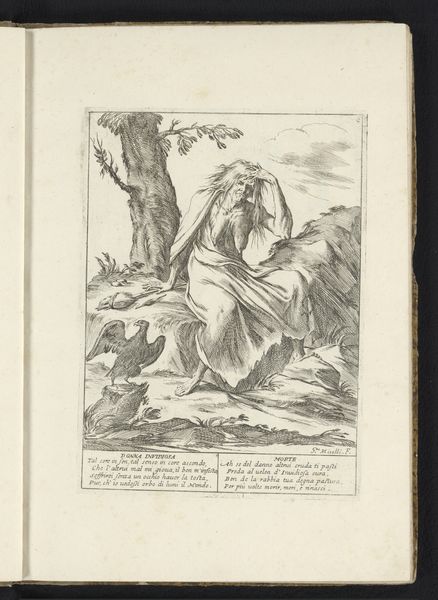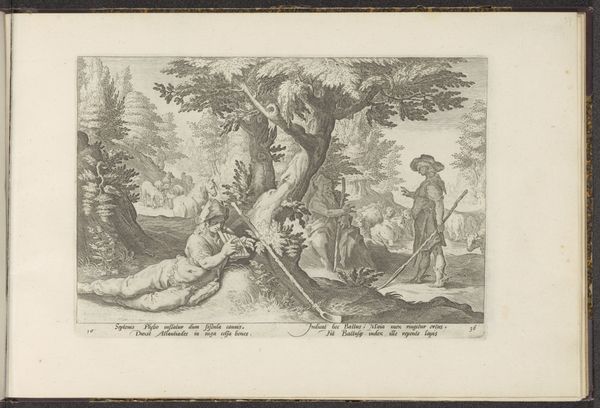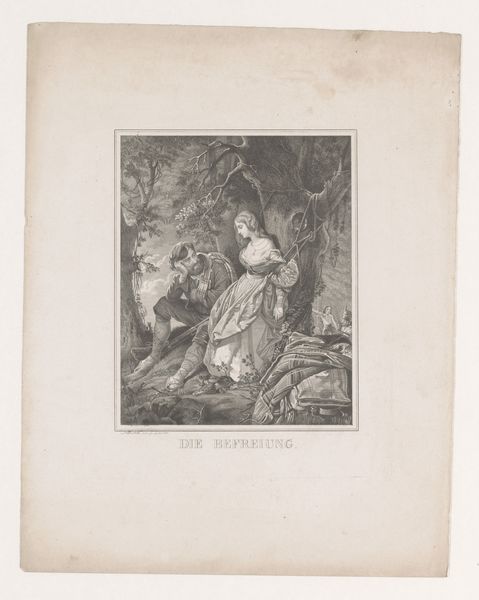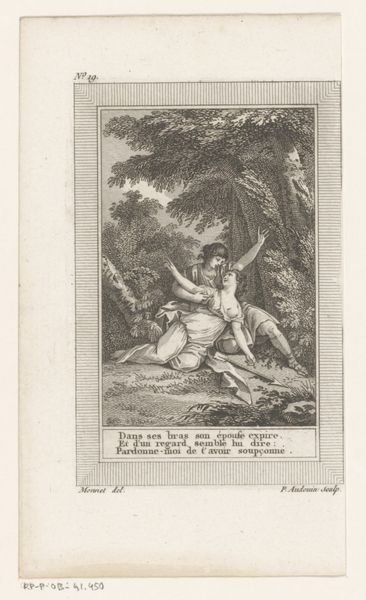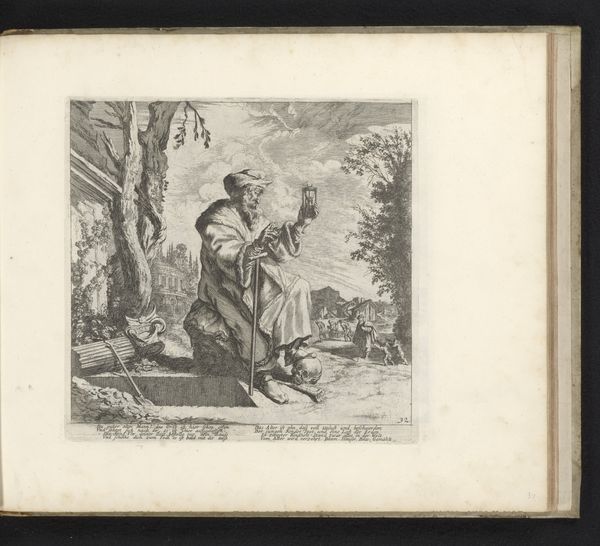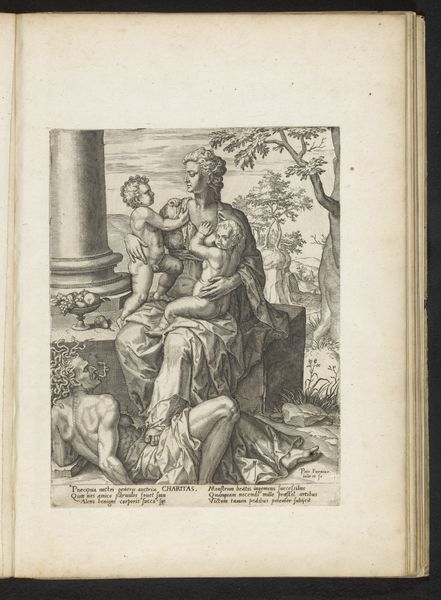
#
aged paper
#
toned paper
#
pencil sketch
#
old engraving style
#
personal sketchbook
#
pen-ink sketch
#
pen work
#
sketchbook art
#
pencil art
#
watercolor
Dimensions: height 266 mm, width 191 mm
Copyright: Rijks Museum: Open Domain
Curator: Looking at "Dryas," a piece made in 1564 by Cornelis Cort and housed here at the Rijksmuseum, my first thought is that it has a beautiful, almost melancholic feel, doesn't it? The delicate lines really bring out that pensive mood. Editor: It does evoke a mood, certainly. For me, I see this not only as an aesthetic piece but as an artifact tied to Cort’s specific training in printmaking – the quality of the lines comes from his dedication to engraving. The choice of paper, the inks...they're deliberate. This piece displays craft knowledge and tradition. Curator: Exactly, and Cornelis Cort was particularly skilled, wasn't he? Looking closer, you can see how he translated form with a few confident lines to shape the figure sitting among the branches. The landscape feels secondary to this almost stoic sitter and the well defined basket they're holding. How might this piece, produced in the 16th Century, function socially, beyond an image for the sake of art alone? Editor: Considering its potential circulation at that time, prints like this weren't just standalone artworks. They played a vital role in disseminating artistic ideas and stories across Europe. The print served as a portable, reproducible form. The myth would become more widely known with relative ease thanks to a material as unassuming as paper. Curator: Yes, its dissemination! It highlights art's role within networks of cultural exchange. I am interested in this circulation because in addition to knowledge production, the image of a female dryad would certainly function as political messaging given the relationship between man and nature. Editor: That's a fascinating avenue. Considering how mythology often reinforced social structures... Who possessed the access to paper, to disseminate the imagery? It leads to so many important points. The dryad and her basket point not just to subject matter, but to means of production that circulated the artistic thought of its time. Curator: Thank you, by emphasizing these networks we create room for further understanding art’s influence during the Reformation. Thanks for sharing that vision. Editor: My pleasure, hopefully it’s shed light on the socio-economic reality in the making of "Dryas.”
Comments
No comments
Be the first to comment and join the conversation on the ultimate creative platform.
